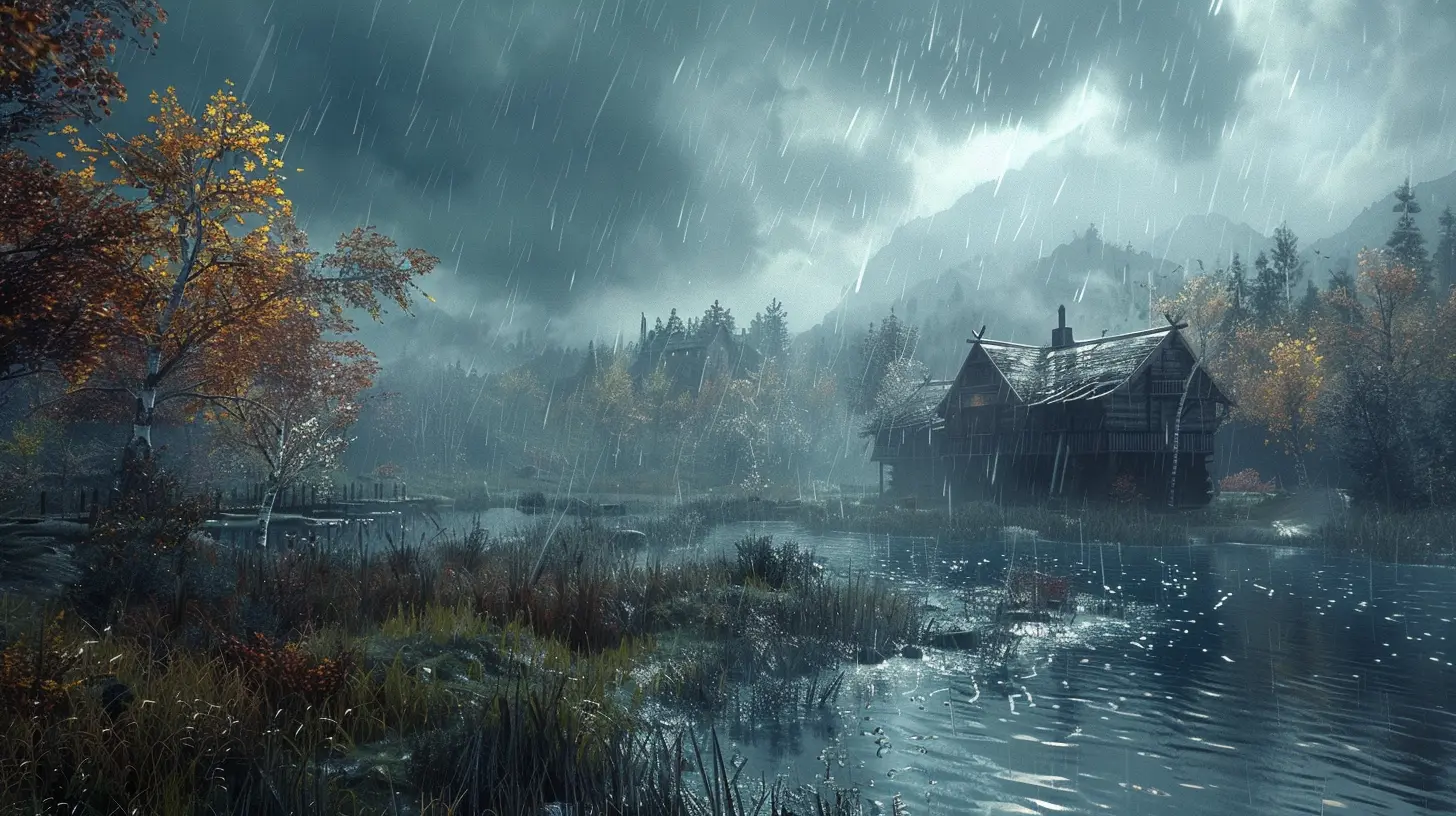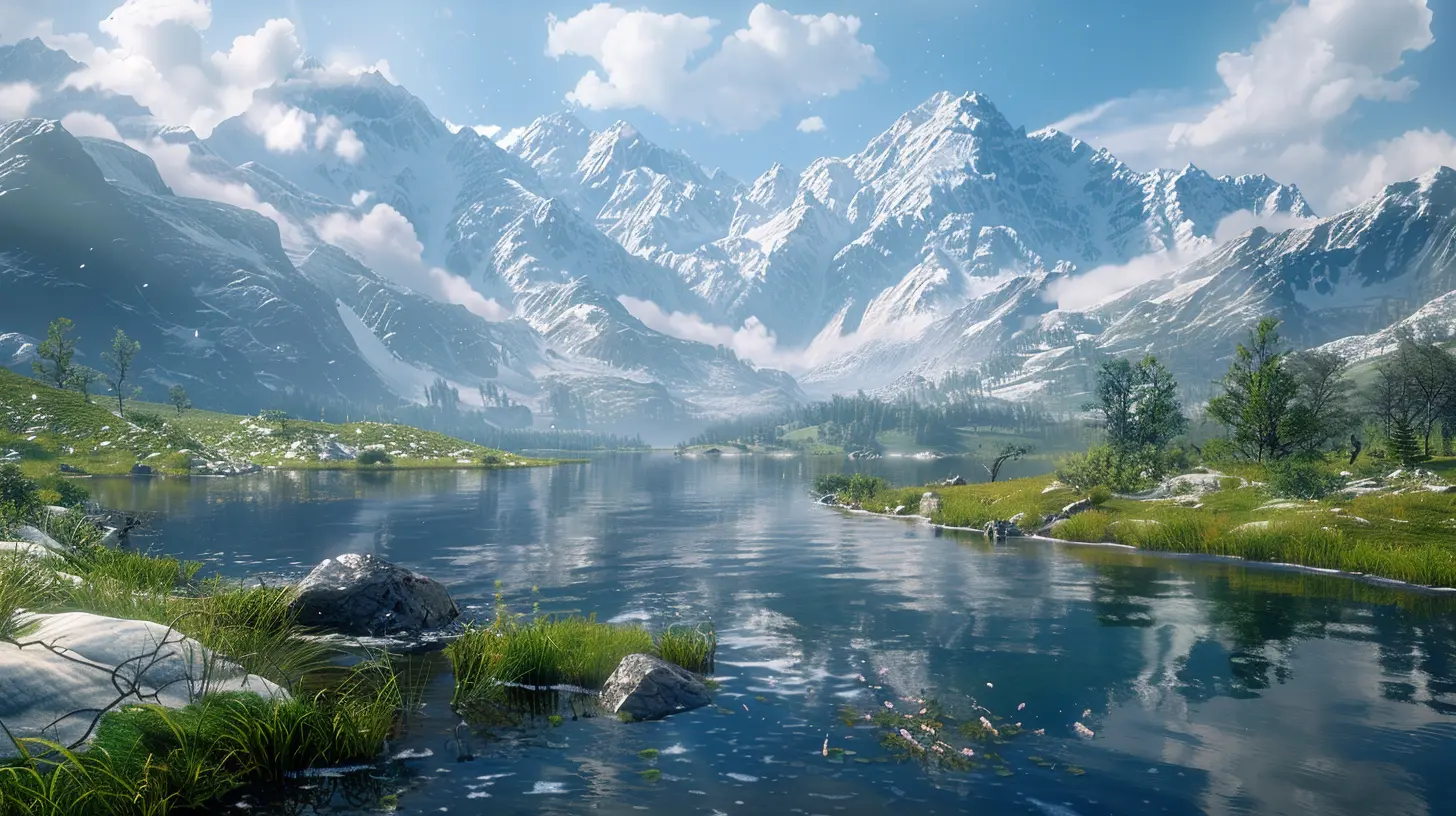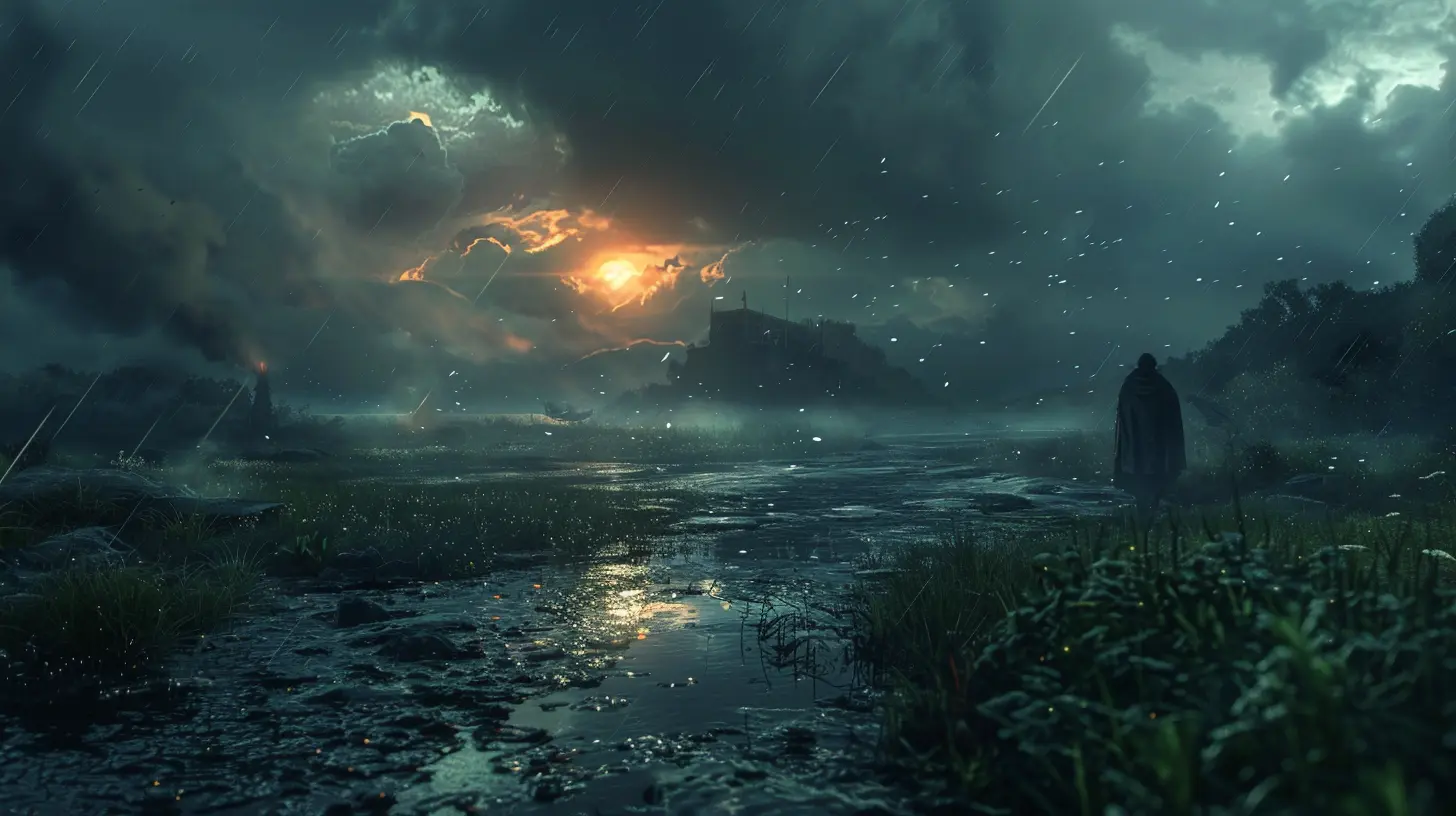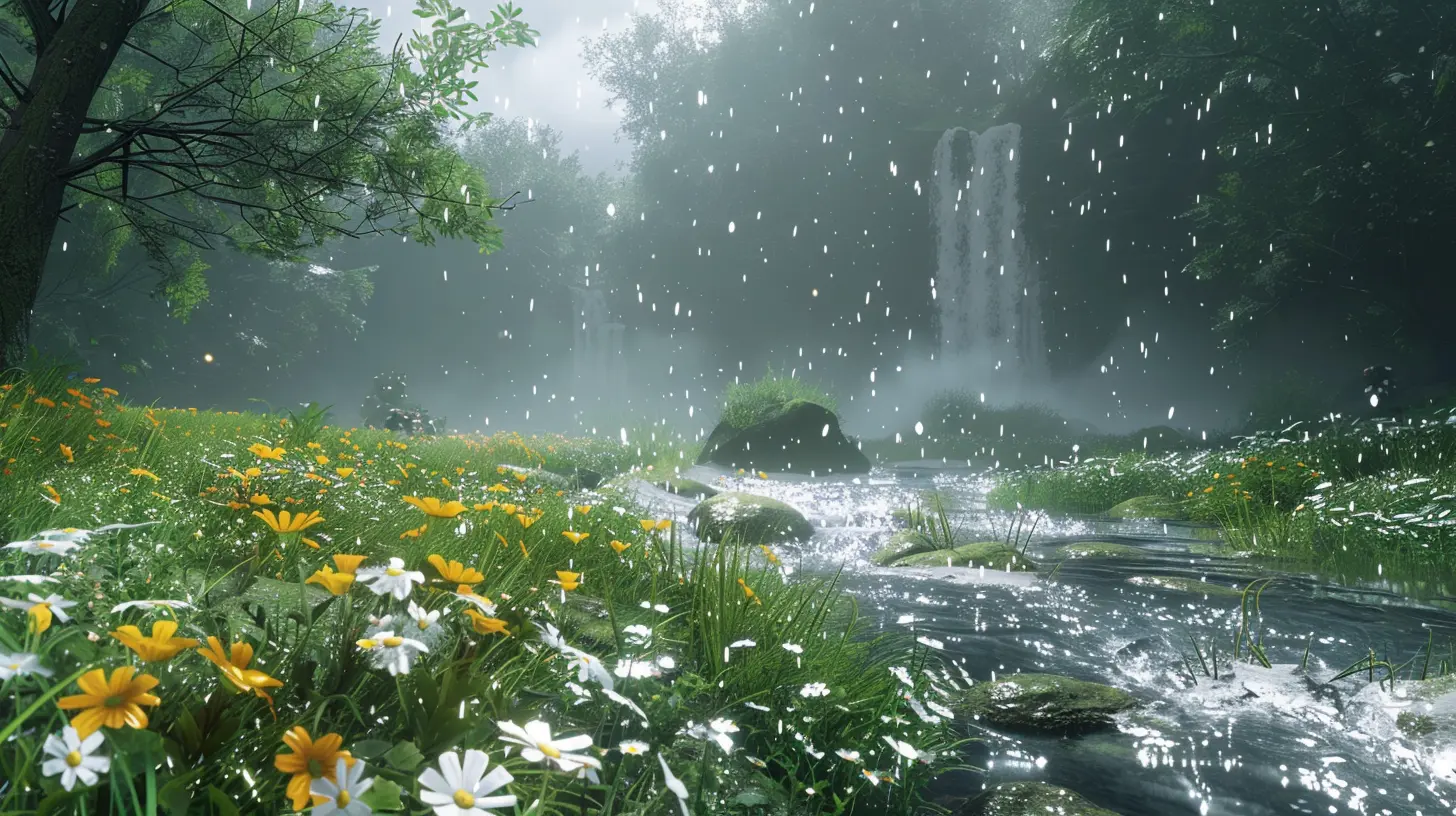How Dynamic Weather and Time Systems Enhance Visuals
15 October 2025
In today’s gaming world, visuals aren't just about crisp textures or stunning character models; they’re about creating an immersive experience that pulls players into the game’s universe. One of the most fascinating ways developers have achieved this in recent years is through dynamic weather and time systems. These features are no longer just fancy add-ons—they've become the silent heroes of games, turning static environments into living, breathing worlds.
So, what makes these systems so special? Why do they matter so much for visuals? Let’s dive in and break it down step by step.
The Art of Immersion: Setting the Stage
Imagine standing in a game’s open-world environment. The sun rises on the horizon, casting long shadows across a dew-covered meadow. As you move forward, clouds gather, the sky turns gray, and raindrops start to patter on the ground, forming puddles that reflect the world around you. Magical, isn’t it?These aren’t just scripted events; they’re the result of dynamic weather and time systems working in sync. Rather than presenting players with a static environment, these systems create evolving landscapes that mimic the unpredictability of real life. It’s like the game is alive, breathing alongside you, and pulling you deeper into its world.
But how does this affect visuals so dramatically? Let’s unpack it. 
Realism on Steroids
Dynamic weather and time systems bring a level of realism that’s hard to achieve with simple pre-rendered environments. Remember how old games used to have the same skybox throughout the entire adventure? It didn’t matter if you played for minutes or hours—the environment looked exactly the same. Fun? Sure. Immersive? Not so much.With dynamic systems, developers can implement changes that feel organic. The sun doesn’t just hang in the sky like a cheap prop—it moves. Shadows stretch and shift as the day progresses, and lighting changes impact how objects in the game world look. It’s like playing in a movie where every frame is alive and responding to the clock. 
Lighting: The Game-Changer
One of the biggest factors in stunning visuals is lighting, and dynamic time systems take lighting to the next level. The way light interacts with the environment is a big reason why games look stunning.In the morning, you might get warm, golden hues as sunlight streams through trees, creating a dreamy atmosphere. By midday, the lighting becomes harsh and bright, reflecting off surfaces and creating stark shadows. And when night falls, the world transforms—streetlights flicker to life, the moon casts cold, silver light, and shadows deepen.
Think about games like Red Dead Redemption 2. The way the sun rises over the mountains or the subtle glow of lanterns at dusk creates visuals that are nothing short of breathtaking. It’s not “just lighting”—it’s storytelling without words. 
Weather Effects: More Than Just Eye Candy
Now, let’s talk about weather. It’s not just about adding rain or snow to make the world look pretty—though, let’s be real, it does look pretty amazing. Weather impacts everything, from visibility to atmosphere.Have you ever played a game where a storm rolls in, and the world suddenly feels more intense? Thunder cracks, wind howls, and rain lashes against your surroundings. The reduced visibility and darker tones change not just the visuals, but also the mood.
Snow-covered landscapes, foggy mornings, or even heatwaves with shimmering air distortions create environments that feel dynamic and alive. Take The Witcher 3, for instance. Walking through a dense forest feels completely different depending on whether it’s a sunny day or if a storm is brewing. It’s like the weather itself has its own personality, shaping the world around you.
Small Details That Make a Big Difference
Dynamic systems also bring in those small, blink-and-you’ll-miss-it details that elevate a game’s visuals. Ever noticed how puddles form after rain and reflect the stars at night? Or how snow accumulates on rooftops and trees? These aren’t just aesthetic choices; they’re deliberate design elements that make the world feel authentic.And it’s not just about what you see—it’s about interaction too. In some games, rain might make roads slippery or muddy, affecting gameplay. Snow might crunch underfoot, and wind might sway trees. These small touches make the visuals feel connected to the gameplay itself, making the experience that much richer.
Examples: Games That Nailed It
Let’s give credit where it’s due. Some games have absolutely crushed it with their dynamic weather and time systems.1. The Legend of Zelda: Breath of the Wild
This game doesn’t just use weather to enhance visuals—it makes weather an integral part of the gameplay. Rain makes mountains slippery, lightning strikes players wearing metal, and day-night cycles affect NPC behavior. The visuals evolve constantly, keeping players on their toes.
2. Grand Theft Auto V
From sunsets over Los Santos to stormy nights by the ocean, the dynamic weather and time systems in GTA V show off Rockstar’s unmatched attention to detail. The way the city comes alive under neon lights at night is pure eye candy.
3. Horizon Zero Dawn
The interplay of sunlight through trees, day-night transitions, and weather effects like rain and snow bring the world of Aloy to life. It’s a masterclass in combining technical prowess with artistic vision.
4. Forza Horizon 5
Racing games might not be the first genre you think of for weather systems, but Forza Horizon 5 proves otherwise. Dynamic weather isn’t just for show—it changes how cars handle, making the visuals deeply tied to gameplay.
Why It Matters for Gamers
So, why should gamers care about dynamic weather and time systems? The short answer: it makes games feel alive. It’s not just about looking good—it’s about creating a world you want to lose yourself in.These systems blur the line between reality and gaming. They offer variety, unpredictability, and immersion. You’re not just playing in a digital sandbox—you’re stepping into a world that reacts, evolves, and feels like it could exist somewhere out there.
The Future Is Bright (And Cloudy, And Rainy…)
As technology advances, we can expect even more mind-blowing weather and time systems in games. With tools like ray tracing and AI, developers are pushing the boundaries of what’s possible. Imagine weather patterns that evolve based on your actions or time systems that affect ecosystems. The potential is limitless.Dynamic weather and time systems aren’t just a trend—they're the future of immersive visuals. So next time you’re admiring a game’s stunning sunset or feeling the tension of a stormy night, remember: it’s all thanks to these incredible systems working behind the scenes.
all images in this post were generated using AI tools
Category:
Video Game GraphicsAuthor:

Avril McDowney
Discussion
rate this article
1 comments
Petra Hernandez
Great read! Dynamic weather and time really do elevate game visuals, bringing environments to life. It’s amazing how these changes can completely alter the gaming experience. Can’t wait to see more!
October 15, 2025 at 4:53 PM

Avril McDowney
Thank you! I'm glad you enjoyed it. Dynamic weather and time truly transform gameplay, and I'm excited to explore more innovations in future articles!


